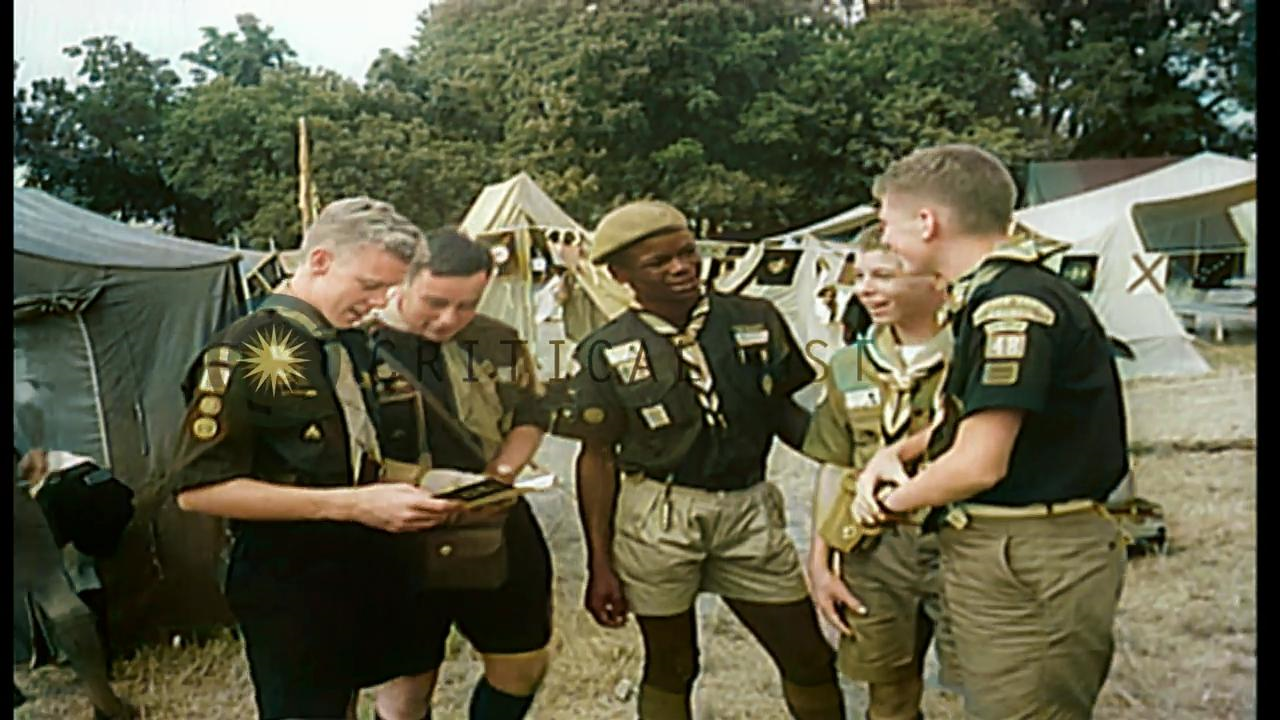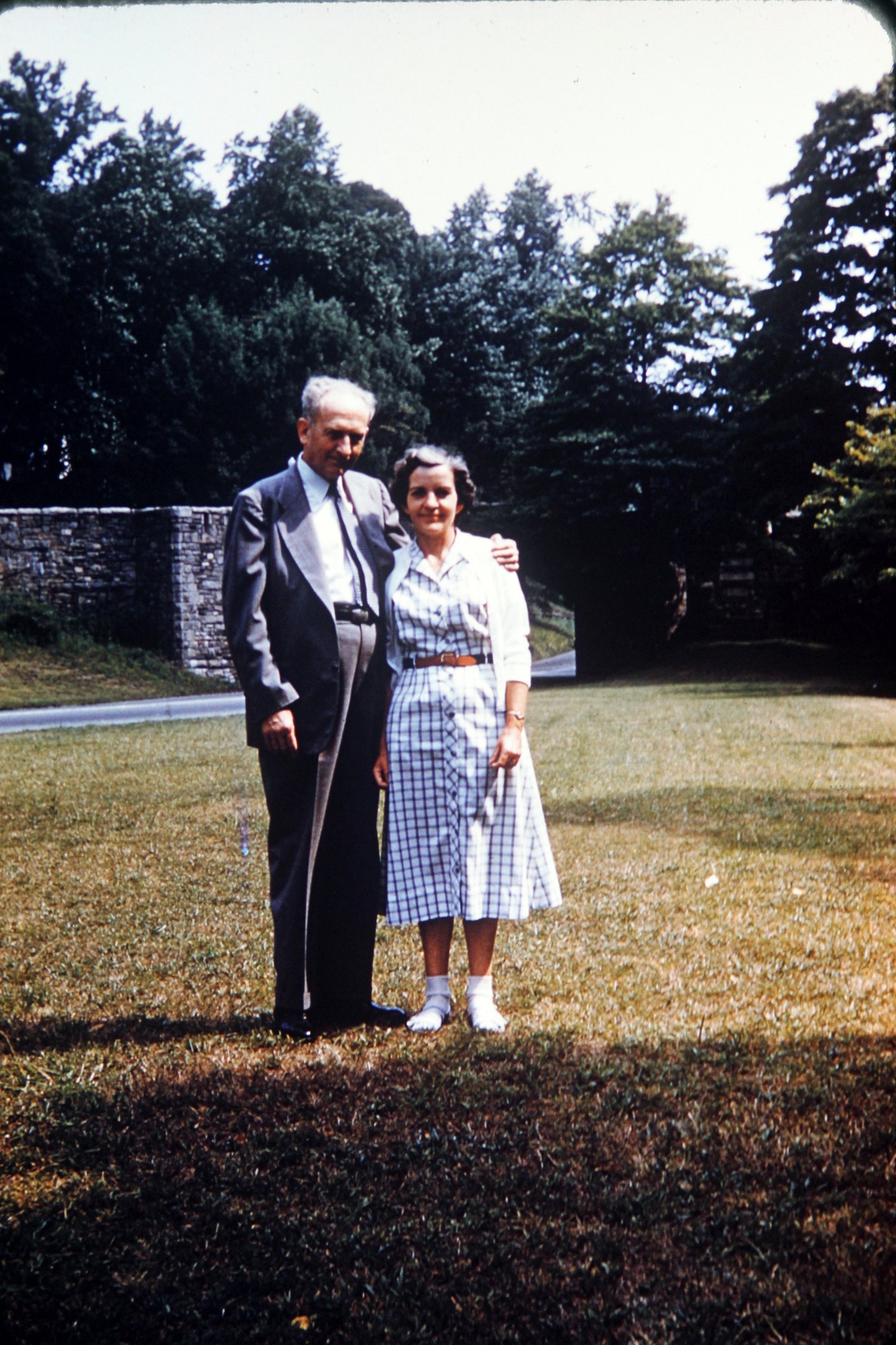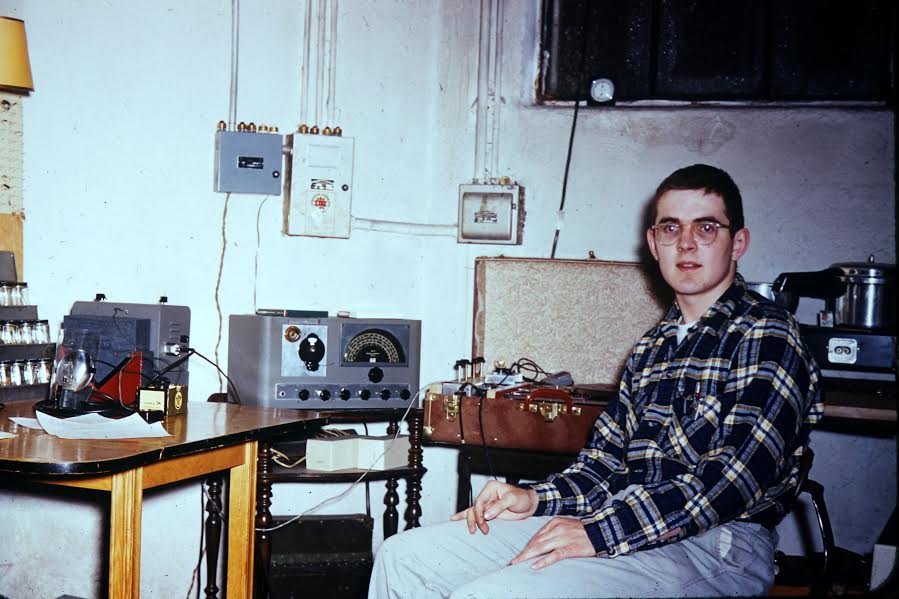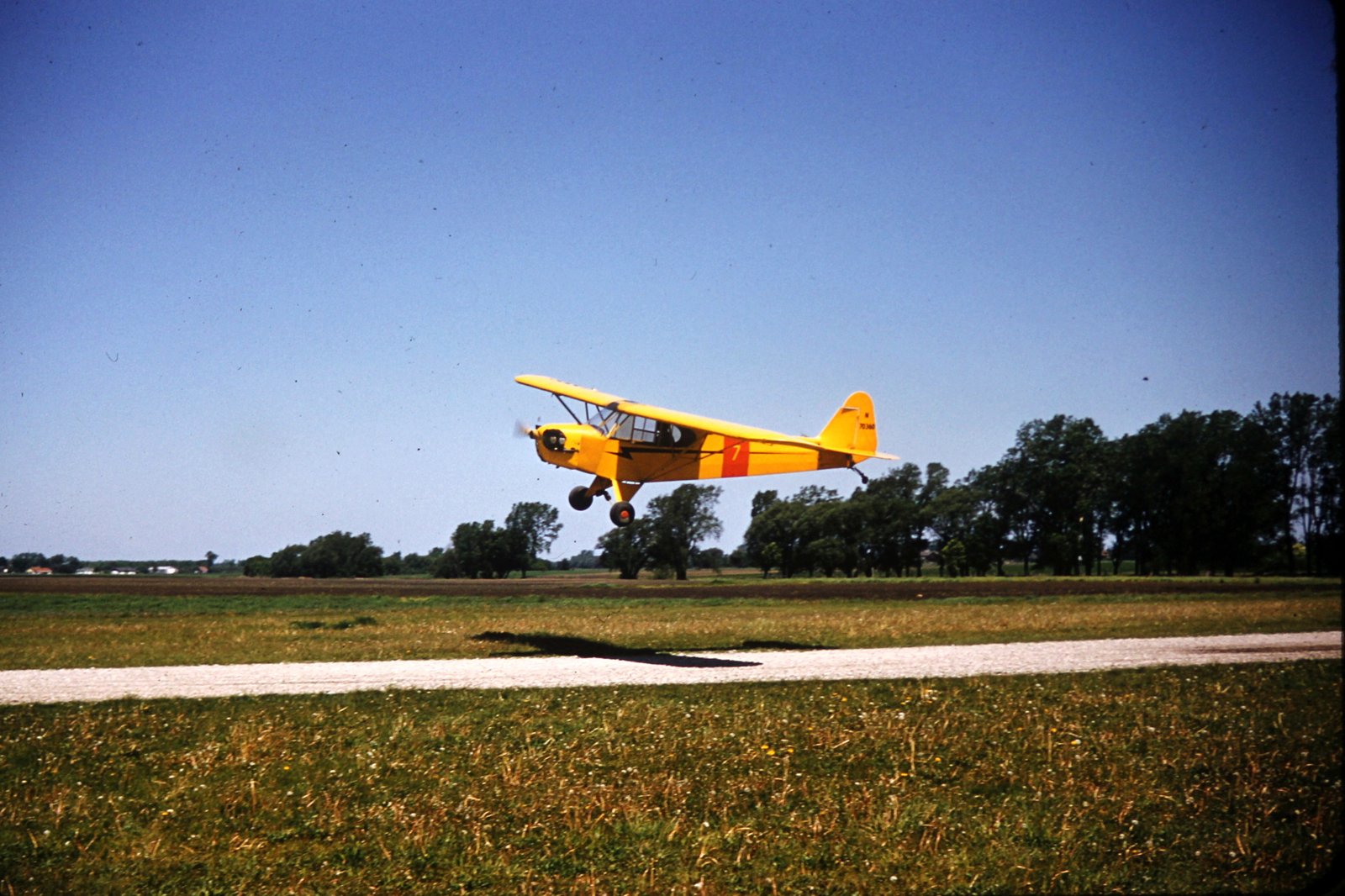Home, Birth, Dixon, Evanston, MIT, Army, Lockheed, Urbana, Research, Digigraphics, Cabin John, Bell Labs, Leisure World, Riderwood, Search
Evanston
(1946-1954)

The war ended, and the Reynold's son returned to his job, displacing Dad. We
moved to Evanston, IL, and Dad commuted as American Steel and Wire Co. sales
representative in Chicago. Evanston is a tightly packed suburb miles from a
farm, dump, factory, or anything abandoned or interesting. Instead of an open
river nearby, Evanston had Lake Michigan edged by mansions, private clubs, and
supervised beaches and parks.
I entered the second half of 4th grade at
Lincolnwood School, a few blocks from our new home. I was a very unhappy and
lonely kid. I did not know anyone there and missed Dixon's open spaces and
freedom. None of the kids in school or neighborhood did any of the things I
enjoyed doing in Dixon. I couldnít do the sports or games they enjoyed. I was a
country bumpkin with none of their social graces, shared local knowledge, and
sophisticated life experiences.
7th and 8th grades
were at Haven School near where we lived. I was a poor student and never got
the hang of rote memory. I still do not know offhand 8 times 7 and such.
Cannot quote any poems or remember any historical dates. My 7th-grade teacher
had many spelling bees, and I always missed my first word. But I am
particularly good at figuring things out. Printing and mechanical drawing were
my best classes.
The rote memory thing has shaped my
whole academic life and thereafter. I had to drop Latin in High School because
I could not handle the vocabulary. Chemistry in college was agony. Everyone had
to pass it as a core subject, and I could not memorize the formulas and "mass
action"
things (I never got what that even was). Luckily, I was not alone; one
professor took us on with many tricks, prompts, and coaching to get us through.
Even today, I cannot memorize the simplest things. I must look back at my Email
to catch the second half of the 6-digit code sent to authorize my web login for
this site. I flunk the part of the Alzheimer's test that requires repeating a
short sequence of words. I lost out on a project position interview at Bell
Labs when I could not produce the meanings of obscure Java language elements.
Even though I had successfully introduced Java to several projects and
taught the Java internal training class. I was so angry at the arrogant
PhD interviewer who thought rote memory was the essence of a computer language
instead of my skill at applying Java to solve problems.
Mom insisted that I
play the clarinet (to fix an overbite I did not have). I could
not memorize the notes and fingering and had no talent at all. Our music
teacher held a class for the whole 7th and 8th grades in the big band
room, where she played records of classical pieces. We had to research and
write papers on composers. It must have taken because I continue to value those
pieces and know the composers. I was in the orchestra and band for 7th,
8th, and 9th grade as the "last chair"
clarinet. I sat way at the back, trying to be quiet. Haven School put on a big
show each year featuring Shubert's
Unfinished Symphony,
which I love and still have in my head even though I couldn't play a note. The
High School Band played all the Sousa Marches, but I was not in the marching
contingent. I finally dropped playing in my Sophomore
year. But I continue to love listening to classical and band music.

We went to the local Methodist Church, and I became a Boy Scout there. I was
active in Scouts, earned many merit badges, reached Star rank, and was elected
to The Order of The Arrow, a camping honor. I represented my troop at the 1950
National Jamboree at Valley Forge, PA.
I spent 3 summers at Evanston's scout camp on
Duck Lake near Muskegon, MIósome of the happiest days of my life. I spent most
of the time on the lake swimming, canoeing, rowing, and sailing. Evanston also
had a winter camp with cabins for fun in the snow near Barrington, IL. We even
biked there for weekend campouts.
Scouts were a significant part of my life. I
would have worked toward Eagle rank and had most of the merit badges and
service projects required, but could not pass the
athletics badge required for Life and Eagle. I could not even successfully
umpire a softball game. My poor eyesight and lack of interest in the game made
the other players mad at me. I served as Assistant Scout Master and Scout
Master for several years in Fair Haven.
Dad gave me a motor for my bike in 8th grade.
It was a little 1-1/2 HP lawnmower-type motor that was mounted on the front
wheel and drove through a small grinding wheel on the front tire. I rode the
bike to HS and about town until it shook itself apart junior year. I did not
have a license for the bike, and it did not have lights or a muffler, so I had
a few run-ins with the police.
Evanston Township High School is a huge
building that serves the whole town. Only 1/4 of it was occupied when I was
there. The 1936 birth year was small because of the Depression. I was a
mediocre student and had no social life at all. I was not into athletics or
school spirit. My friends were all nerds, like me. (See: My Depression)
As soon as I could get a work permit, I
started at Myerson's Pharmacy as a Soda Jerk and Clerk. It was a small corner
drugstore near our home and church. I worked there most afternoons and weekends
for several years. I ran the store alone most Sunday mornings and handled
everything from ordering, stocking, cleaning, selling, and delivering. I used
my bike for delivery, and when I got my license, I used Myerson's big DeSoto.
I had a side job of returning the rented 35mm
films from the High School to downtown Chicago each week. It was an El
ride to Skid Row and unpleasant, particularly in winter and at night.
Dad and I built a screened patio on the side
of the garage. We framed it with cold-rolled punched steel angle that was the
very devil to cut and drill (Dad was in the steel business). The patio had a
laid brick floor and a tree growing up through the roof in the middle.
Beautiful, but I do not remember us ever using it.
He and I finished the attic with a big
bedroom, storage room, and full bath. He did the plumbing, framing, and
flooring. I did all the wiring, insulation, and most of the knotty pine
board walls and ceiling. Dad was a very gregarious man, athletic, and a hard
worker. He was not an empathetic father to a shy, near-sighted, clumsy kid. He
would throw a ball at me and get mad that I could not catch it. We worked well
together on projects. He did not understand electricity at all and respected
that I did. He was supportive of our church and scout troop.
We tore apart an old roll-top desk and cut
back the top and drawers with a band saw Dad set up in the basement. Edith and
I steel wooled, gunked off years of accumulated paint and varnish, and
refinished it with Butcher's Wax. It was gorgeous. Mine until I moved away. It
became my niece Laura's in Rochester, MN. She may still have it.
Dad's company engineered a buyout of
Bussey Products Company, a supplier of farm products made of steel in Stickney,
an industrial area of Chicago. Dad became President of Bussey. The job was
stressful, and his commute was awful. He died of a heart attack in 1952 at age
45.
Mom was also gregarious and athletic.
She golfed, bowled, and played tennis in various leagues and clubs. None of
that took with Edith and me. We both were unathletic and noncompetitive.
Mom was very much a socialite. She had many friends and bridge parties, etc.
She was brought up in Evanston in a wealthy household. She went to a
"Finishing" High School, Roycemore, much more oriented to social
graces than academics. Edith also went to Roycemore.
Evanston had a
"colored section" of small homes between the drainage canal and the
high school. Our elderly cleaning women and a few of my friends lived there.
Mom found out that the township had mixed up the deeds of that section (some
racist in the records office thought it was a joke). Folks there were paying
property taxes on the wrong houses and ran into trouble selling their homes,
getting loans, and probating wills. Mom led a campaign to shame the
administration into fixing the records. I had never seen her so angry.
Evanston was very racist and clannish. Those
of us who were white and lived on the North side of town were above the poorer
folks who lived down near the border of Chicago. The elite lived on the
lakeshore to the North. Lessor folks lived to the West, away from the lake.
Blacks could only live in the small enclave near the drainage canal. My public
grade school would not let my Jewish friend Si Handelsman attend. He was
allowed into Haven School and the High School.
I got into
photography and built a darkroom in our basement. I did not take many pictures
as my interest was in the equipment and the smelly chemicals and process. My
High School photography club had a few antique Speed and Crown Graphic cameras
and an ancient single-lens view camera with a drop mirror. I messed around with
these instead of taking pictures at sporting events. I bought a cheap, used
35mm half-frame camera in 8th grade and took it to the Jamboree, but
didnít take many pictures (I lost my glasses and could barely see). Half frame
meant that I had to develop, print, and enlarge all the pictures myself because
of the odd size.

I got into electronics, built several Eico and Heathkit
instruments, and designed and built electronic flash units. I sold one. I built
a recording thing into a suitcase that played and recorded on both 78rpm
records and reel-to-reel mag tape. This and the flash units were shown at
several science fairs. I won an honorable mention in the Westinghouse Science
Awards with an electronics project using the trigger tube of the flash units as
an ionic oscillator radio transmitter.
When Dad died (1952), Mom, Edith, and I moved to an apartment near Haven School
and the drugstore. Mom had never worked and had a rough time. She did the census one year, took speed writing classes, did clerical
work, and became a dental technician in downtown Evanston. She married Paul
Sellers, a widower 20 years older with a grown-married daughter. Paul and his
wife knew Mom and Dad through their bridge parties and such. Paul was super in
every way. He was an investment banker with The Chicago Corporation. We moved
to his house up near the border of Wilmette.

Here are Paul and Mom shortly after their wedding. We all loved Paul, and he
and Mom were a very devoted, loving couple. Paul was born in Sellersburg,
IN, and grew up in a rural area with no electricity, telephone, paved
roads, or any other modern things we now enjoy. He served in World War I in
France, handling horses and mules with the artillery. He moved to Chicago as a
bank clerk and later as a banking investment advisor. One of his clients
invited him on a yachting trip to the Gaspe Peninsula that Paul
recorded on his big 16mm movie camera. I wish we still had those films.
They were spectacular. This was before the stock market crash, and the yacht
was a full-rig square sail ship with a uniformed crew. Another of his
clients was the Galvin family, the founders of Motorola. He shepherded
their accounts all during their growth from making car
radios to integrated circuits and cell phones.

I took over a corner of Paul's basement for my radio and electronics work. One
of the flash units is on the left. It had a 2-volt wet battery and vibrator
power supply as well as plug-in. The recording thing is in the suitcase on the
right. Both were built from parts. Allied Radio in South Chicago was my supply
depot. I hauled them to science fairs and on to MIT. There was another
table with an oscilloscope, vacuum tube multimeter, and many different power
supplies made from kits.
You can see some of the electrical
connections for the house. All houses those days had just 60-ampere
serviceófour screw-in 15-amp fuses. Modern homes have 200 amp or larger service
with 20 or more circuits with breaker switches. I added some more circuits,
fuses and wired the enclosed back porch that had no outlets or lights.

In my senior year, I went to the local airport and took flying lessons at Sally's
Flying School.
Palwaukee was one of the busiest uncontrolled airports in the country
and was in the traffic patterns of O'Hare and Glenview NAS. Sally had a
dozen Piper J-3 Cubs with a distinctive red number mark on the fuselage. I took
instruction there off and on over several years as I could afford it. I passed
my Private Pilots flight test from Sally herself. She had me do a power-off
wheel landing, which I had not trained for. I was thrilled beyond measure to
get the license. I went on at her
school to check out in the Cessna 140. None of my flying to this point had any
radio or air traffic control instruction. It was all
stick and rudder and finger on the map work.
Here is a YouTube video of a Piper Cub
flight: https://www.youtube.com/watch?v=EMm1oJQQlOw
Mom was terrified of flying. She would loan
me the car to go to the airport, but neither she nor Paul ever watched me fly.
None of my friends were interested either, but we usually could get a gang
together for the Glenview Naval Air Station airshow. A classmate of my uncle
had a Beechcraft Bonanza business plane, and he took me on several long trips.
One to Kenora, Ont. delivering a customer and his grandson to a grass strip
fishing camp in the boonies. On the return, we were off the flight plan, dodging
thunderstorms at 12,000 ft. and intercepted by 2 NORAD jets. Seeing an F-86
going straight up awfully close is quite a thrill.
After HS, I worked the summer for my uncle
Dick at Dun Lee X-Ray Tube in Stickney. I took the bus to the Central St. train
station, the Northwestern train to downtown Chicago, walk to Union Station, and
then the El out the Congress St. corridor to work. I went around to the various
craftsmen to get the measurements of their work and draw up the tubes they were
making. Dun Lee made the best valve and X-Ray tubes in the business, and
everyone was proud to work there. It was a small company of about 30 employees,
but what they produced was magic. The commute was so long that I did not have
the energy to become a draftsman and always avoided table work thereafter.
Next MIT

